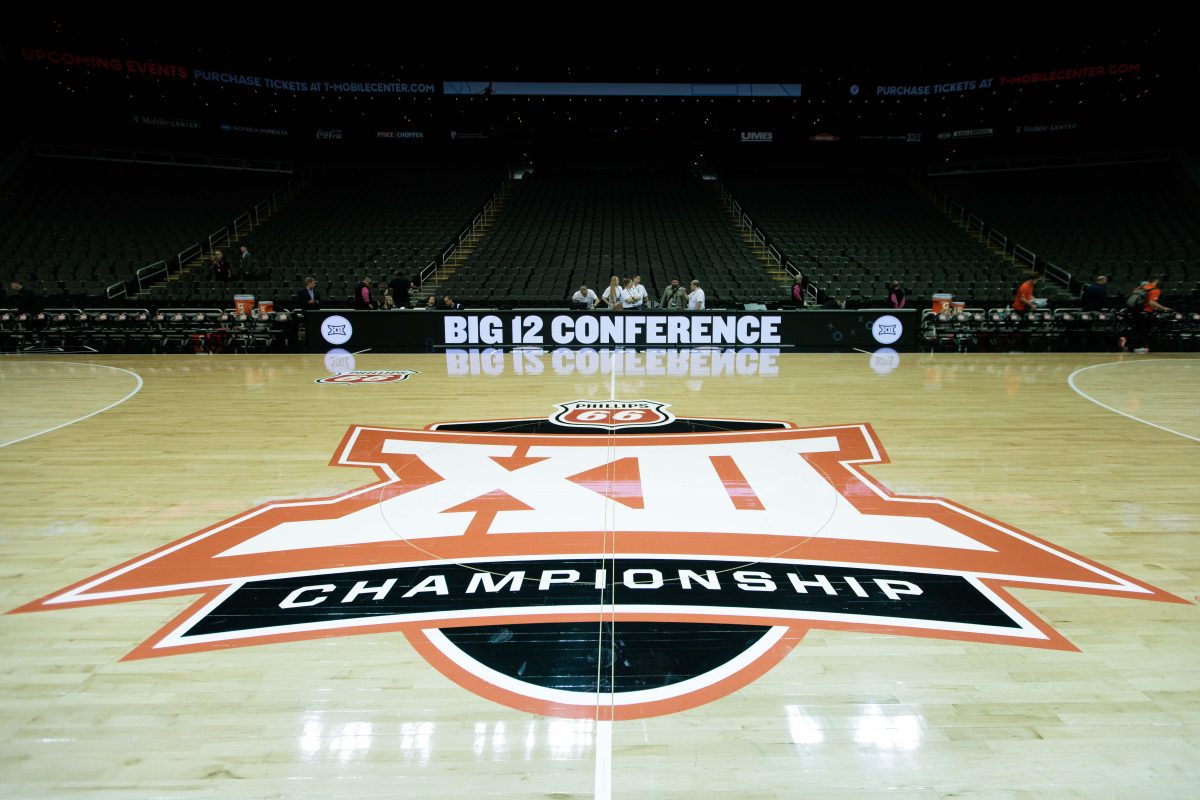How The Big 12 Tournament Could Work in 2025

KANSAS CITY, Mo. — The Big 12 Conference put the lid on its first — and only — 14-team men’s and women’s conference tournaments on Saturday. It’ll likely never happen again.
That’s because in 2025 the Big 12 Tournament will include 16 teams. Yes, the conference announced that all 16 teams will participate in the event, which will be at T-Mobile Center through 2031.
So, how will that work?
It’s a nice thought exercise. The Big 12 has never hosted a 16-team event before. The natural thought is to go to an NCAA Tournament-style bracket. You know, No. 1 vs. No. 16, No. 8 vs. No. 9, etc …?
But it also ignores the precedent the Big 12 set this weekend and also set when it was actually a 12-team league.
This weekend’s tournament featured the top four seeds with double byes into the quarterfinals and the No. 5 and 6 seeds with single byes into the second round.
Go back to the last 12-team tournament in 2011 and the top four seeds received single byes.
The league clearly wants to reward teams for finishing high in the Big 12 standings. But how do you do that with 16 teams?
Here is how I believe the Big 12 Tournament will look at its brackets for the 2025 men’s and women’s tournaments.
Double Byes
The double byes will continue to be a thing. Like this year, I believe the Big 12 will give those bids to the Top 4 teams in the final regular-season standings. So, like this year, the competition in the final two weeks for those spots will be fierce.
In this tournament, it made all the difference. All four teams that got the double-byes — Houston, Iowa State, Baylor and Texas Tech — won their first game and advanced to the semifinals.
Single Byes
The single byes will be a thing too. But I see the Big 12 expanding those from two to four. In other words, the Nos. 5-8 seeds all would get single byes into the second round.
This year BYU and Kansas got the single byes. If we applied this format this year’s field, then No. 7 Texas and No. 8 TCU would have gotten a single bye, too.
Rest of the Field
The rest of the conference — the remaining eight teams — would be seeded based on conference record. That would be the first round of the tournament.
The Bracket
If that’s where the Big 12 ultimately lands, then we need a bracket. Based on how the Big 12 put together the bracket his year, this is how I believe it could progress in a 16-team field with four double-byes and four single byes.
First Round
Game 1: No. 9 vs. No. 16
Game 2: No. 10 vs. No. 15
Game 3: No. 11 vs. No. 14
Game 4: No. 12 vs. No. 13
So the first round would likely be a quadruple-header on Day 1. The No. 9 seed, in this case, would be the ‘top seed,’ for lack of a better term, and play the last-place team. From there, teams are seeded and paired accordingly.
Second Round
Game 5: No. 9/No. 16 winner vs. No. 8
Game 6: No. 10/No. 15 winner vs. No. 7
Game 7: No. 11/No. 14 winner vs. No. 6
Game 8: No. 12/No. 13 winner vs. No. 5
Another quadruple-header day. Assuming everything in the first round goes chalk, No. 5 would face No. 12, No. 6 would face No. 11, No. 7 would face No. 10 and No. 8 would face No. 9.
Of course there could be upsets (this is March after all) and if so the single-bye seeded teams would benefit from that.
Quarterfinals
Game 9: Game 5 winner vs. No. 1
Game 10: Game 6 winner vs. No. 2
Game 11: Game 7 winner vs. No. 3
Game 12: Game 8 winner vs. No. 4
One more quadruple-header on Day 3 and now we’re into the double-bye teams. If everything goes to form, the No. 1 seed would get the No. 8 seed from the second round, No. 2 would get No. 7, No. 3 would get No. 6 and No. 4 would get No. 5. Think of this as if all the high seeds in one quadrant of the NCAA Tournament bracket won their first-round games (which rarely happens these days). This is what you would get.
Semifinals
Game 13: Game 9 winner vs. Game 10 winner
Game 14: Game 11 winner vs. Game 12 winner
Finally done with the quadruple-headers and into the nitty-gritty of determining who gets to the championship game. If you’re a non-bye team and you get this far, you should be going to some kind of postseason play. It would be an accomplishment to go through this three-day gauntlet and get to the Big 12’s Final Four.
Championship
Game 15: Game 13 winner vs. Game 14 winner
On Day 5, we crown a champion.
To me, this seems like the most logical format. It rewards teams that have great seasons, gives a bit of a reward to those teams that are above the midline in the conference, allows everyone to play and wraps up the event in five days.
We would apply the same bracket to the women’s tournament. So we’re talking 30 games in 10 days and two champions.
That’s a lot of basketball, but it’s only four more games — two men’s and two women’s — than the Big 12 just put on in Kansas City. You’re not even adding an extra day to the event. The day off the women enjoyed that Sunday just becomes the quarterfinal day, if you want to keep the same schedule.
Now we’ll see if the Big 12 agrees. See you next year, Kansas City.
You can find Matthew Postins on Twitter @PostinsPostcard.
























